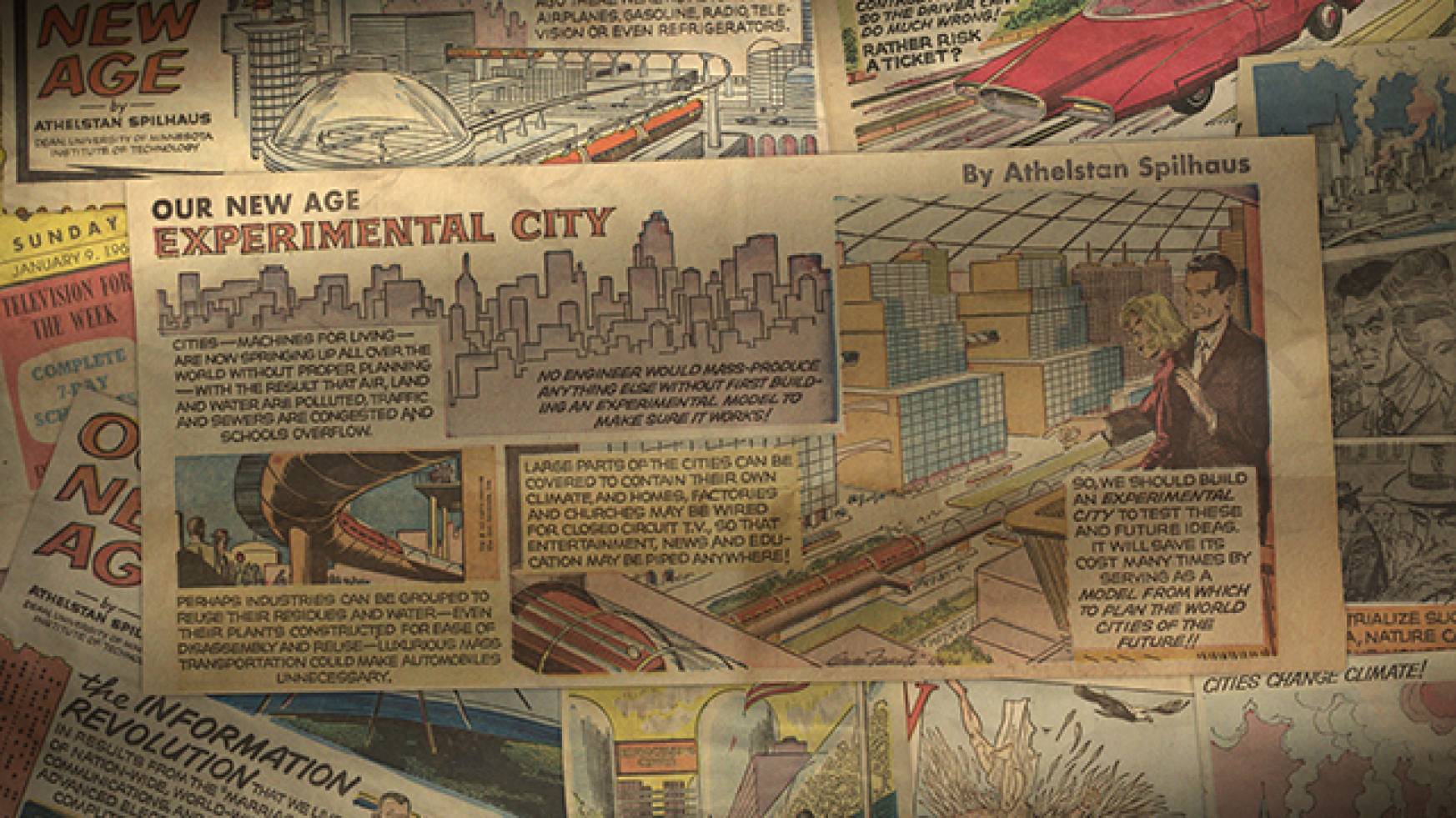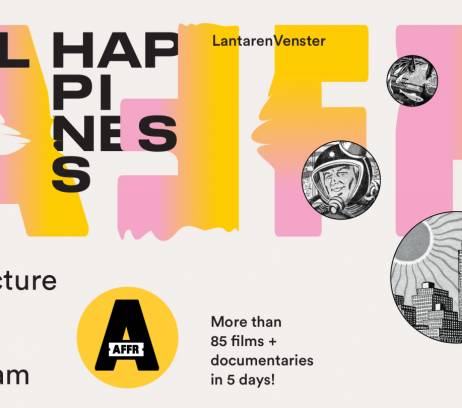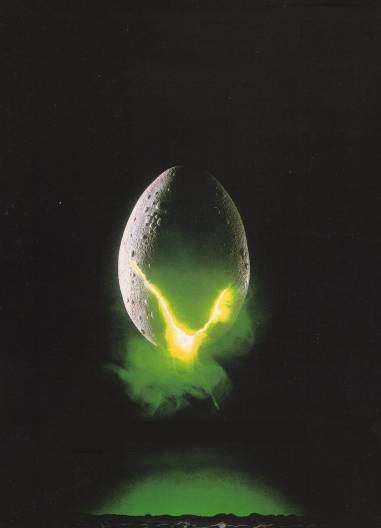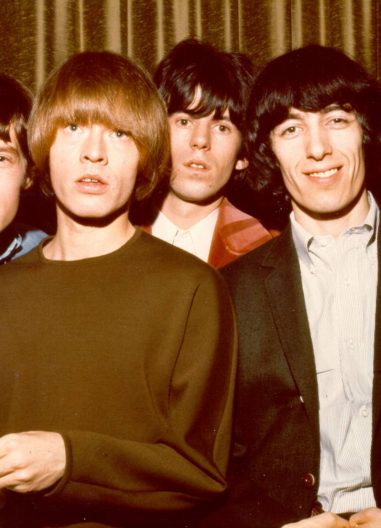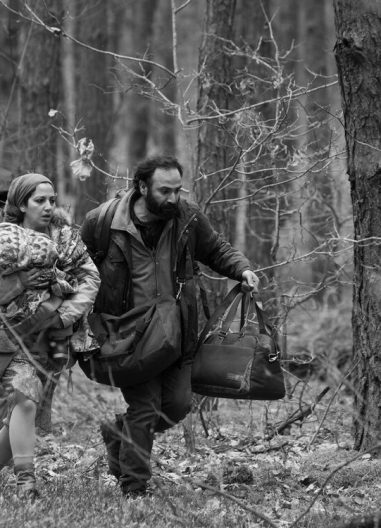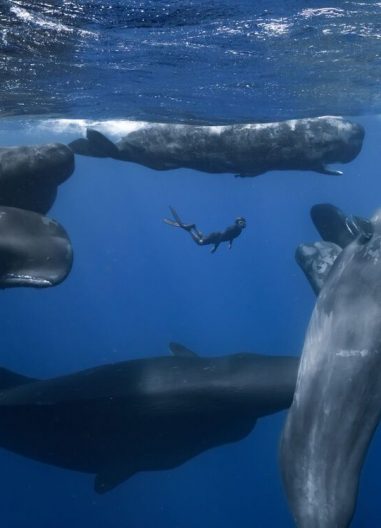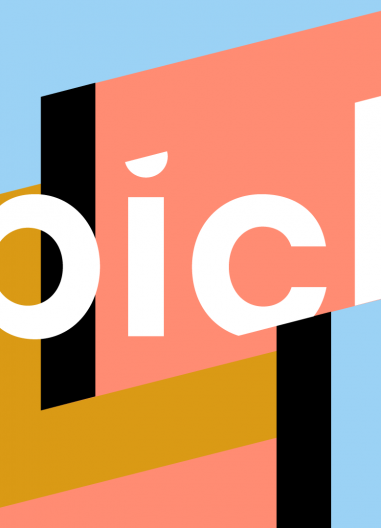The Experimental City
Het moest het ultieme stedelijke laboratorium worden: Experimental City. Een megalomaan plan dat in de zestiger jaren werd ontwikkeld om aan te tonen dat de groeiende problemen van grote steden oplosbaar waren. Luchtvervuiling, mobiliteit, afval, energiegebruik , voor alles bood de stad een oplossing. Een utopisch building happiness voor 250.000 inwoners op het platteland van Minnesota. Zelfrijdende auto’s, hergebruik van materialen, zonne-energie , een enorme koepel van Buckminster Fuller tegen klimaatsinvloeden. Het was de ultieme droom van wetenschapper Athelstan Spilhaus, die zijn voorspellingen wekelijks als stripverhaal in de kranten publiceerde en daarmee miljoenen Amerikanen deed dromen van een nieuwe wereld die binnen handbereik lag. Een film als fascinerende reis door de tijd vol aanstekelijke sciencefiction uit de zestiger jaren die nu, vijftig jaar later, actueler is dan ooit.
It was supposed to be the ultimate living lab for urbanization: The Experimental City. A megalomaniac plan developed in the 1960s to show that the growing problems of big cities could be resolved. Air pollution, mobility, waste collection, energy use: the city offered a solution for everything. It was a utopian paradise of cutting-edge construction for 250,000 inhabitants, situated in rural Minnesota. Self-driving cars, recycling and re-use, solarpower, and a huge geodesic dome designed by Buckminster Fuller to ward off weather and climate. It was the ultimate dream of scientist Athelstan Spilhaus, who published his futuristic predictions in a weekly newspaper comic, inspiring millions of Americans to dream of a new world within their grasp. The film is afascinating journey through time, filled with attention-grabbing sciencefiction from the 1960s; 50 years later, it seems more relevant than ever.
Kies tijdstip
- filmspecial
Het moest het ultieme stedelijke laboratorium worden: Experimental City. Een megalomaan plan dat in de zestiger jaren werd ontwikkeld om aan te tonen dat de groeiende problemen van grote steden oplosbaar waren. Luchtvervuiling, mobiliteit, afval, energiegebruik , voor alles bood de stad een oplossing. Een utopisch building happiness voor 250.000 inwoners op het platteland van Minnesota. Zelfrijdende auto’s, hergebruik van materialen, zonne-energie , een enorme koepel van Buckminster Fuller tegen klimaatsinvloeden. Het was de ultieme droom van wetenschapper Athelstan Spilhaus, die zijn voorspellingen wekelijks als stripverhaal in de kranten publiceerde en daarmee miljoenen Amerikanen deed dromen van een nieuwe wereld die binnen handbereik lag. Een film als fascinerende reis door de tijd vol aanstekelijke sciencefiction uit de zestiger jaren die nu, vijftig jaar later, actueler is dan ooit.
It was supposed to be the ultimate living lab for urbanization: The Experimental City. A megalomaniac plan developed in the 1960s to show that the growing problems of big cities could be resolved. Air pollution, mobility, waste collection, energy use: the city offered a solution for everything. It was a utopian paradise of cutting-edge construction for 250,000 inhabitants, situated in rural Minnesota. Self-driving cars, recycling and re-use, solarpower, and a huge geodesic dome designed by Buckminster Fuller to ward off weather and climate. It was the ultimate dream of scientist Athelstan Spilhaus, who published his futuristic predictions in a weekly newspaper comic, inspiring millions of Americans to dream of a new world within their grasp. The film is afascinating journey through time, filled with attention-grabbing sciencefiction from the 1960s; 50 years later, it seems more relevant than ever.

